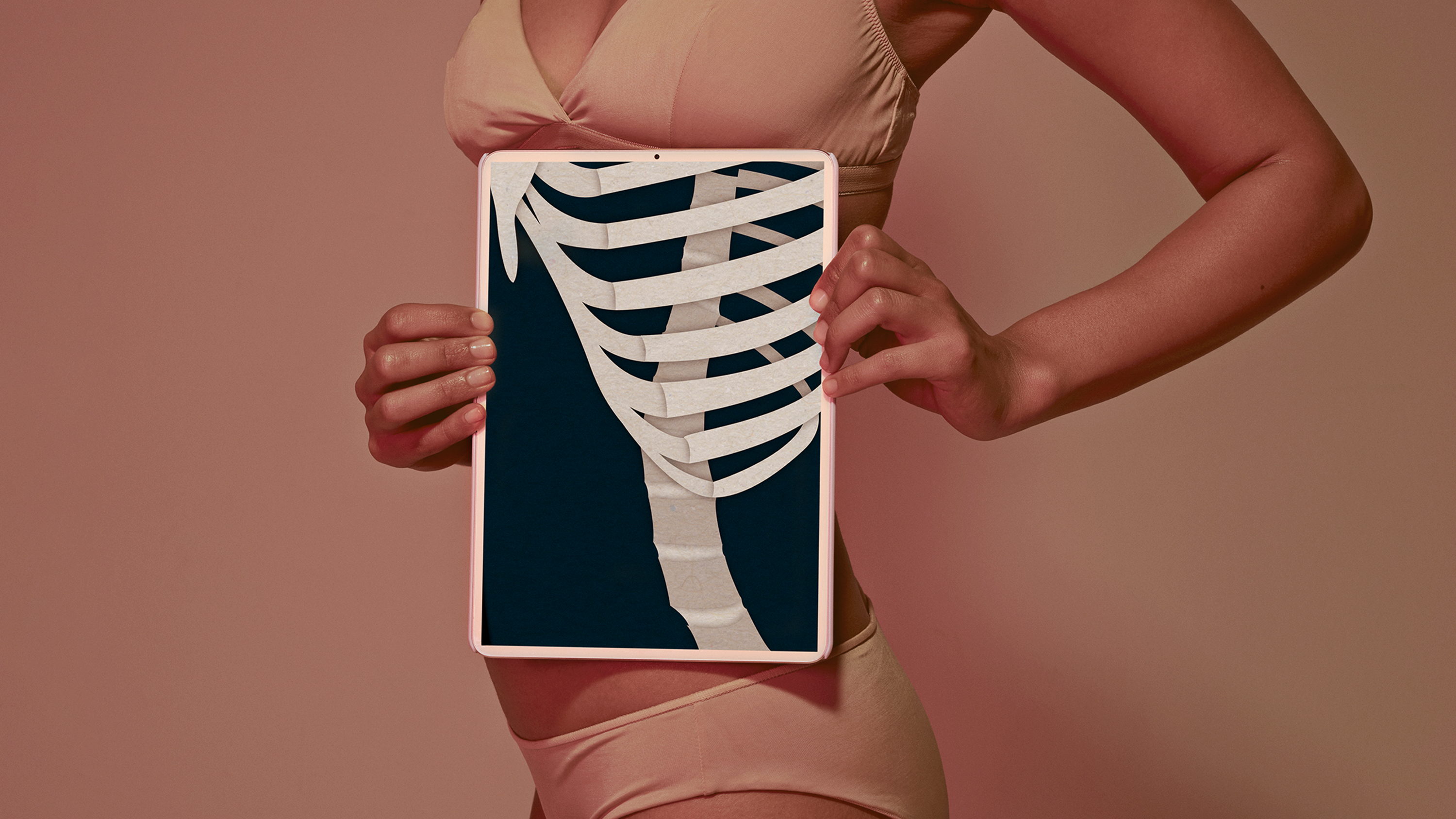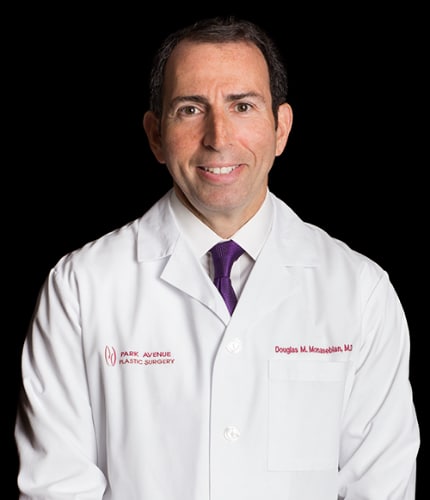Rib Remodeling Can Offer a Smaller Waistline—Here's What You Need to Know
Would you break your ribs for a snatched effect?


A few months ago as I was sifting through my ever-growing inbox, I came across an email with an intriguing subject line. It was about a fairly new plastic surgery procedure called “rib remodeling,” and I’d never opened a message faster. In essence, it involves surgically altering the lower ribs via a specialized device that punctures them so that they can be reframed and shaped into a smaller, curvier waistline. Kazbek Kudzaev, MD, a Russian plastic and orthopedic surgeon, has spent the last decade pioneering the surgery, and at the top of the year, a report from the American Society of Plastic Surgeons called out rib remodeling as one of several other procedures that were expected to trend in 2025.
More broadly, Charles Galanis, MD, board-certified plastic surgeon and founder of Galanis Plastic Surgery, predicts that 2026 will be “the year of the waist,” as patients come to him in droves seeking out various body contouring procedures, rib remodeling being one of them. “This next generation or iteration of procedures is rib remodeling, which is a major breakthrough in terms of what we as body surgeons are able to accomplish for patients that was previously not possible,” he says.
Wanting a slimmer or more “snatched” waistline is hardly a new concept. Corsets that cinch the waist and support the bust have been fashion staples since the early 1800s, and aesthetic rib removal surgeries, questionable as they are, began gaining attention in the 1980s, most notably with an unsubstantiated rumor spread in 1988 accusing singer Cher of having a few of her ribs removed. A simple Google search of the words “waistline reduction” also hails thousands of results in the form of videos, academic journals, and long-form listicles detailing all the various ways a person can slim their waist, yet most of the aforementioned “solutions” are either unsafe or impermanent. And that's exactly where rib remodeling comes in.
What Is Rib Remodeling?
To be clear, rib remodeling is not the same as rib removal, which, per Dr. Galanis, is much more invasive and involves a surgeon removing the 11th and 12th ribs (they’re called “floating ribs” because they don’t attach in the front) from the lower ribcage in order for the waist to appear tighter or more cinched. It’s a procedure with an obviously controversial history and some pretty serious risks—a May 2025 journal article written by Alfredo E. Hoyos, MD and several other medical experts reported that rib removal can cause a “significant detrimental effect on lung and respiratory muscle function." This is one of the main reasons why rib remodeling is slowly being introduced and promoted by some doctors as an alternative for those hoping to contour their bodies and achieve an hourglass shape—the procedure is much safer in comparison.
Rib remodeling is relatively new in the United States, but it’s been performed in Europe for several years, according to Douglas M. Monasebian, MD, a board-certified plastic surgeon at Park Avenue Plastic Surgery in New York City. During the procedure, a patient is placed under general anesthesia before “one side of the rib bone is fractured by an ultrasonic saw,” says Shim Ching, MD, board-certified plastic surgeon and founder of Asia Pacific Plastic Surgery. The ribs are then pushed inwards and a patient wears a corset or rib remodeling garment for six weeks to maintain the results.
Dr. Galanis specializes in the RibXcar procedure, which was developed by Peruvian plastic surgeon Raul Manzaneda, MD. It’s a minimally invasive surgery that can be performed in an hour, and it uses a piezoelectric device guided by ultrasound that allows for “a selective and delicate microvibrational manipulation of the bone.” He insists that the ribs aren’t technically broken per se during the procedure—instead, the device is used to make “very small, super-precise and smooth, shallow cuts or cracks” in ribs 11 and 12. As a result, the waist can be narrowed somewhere between 12 and 18 centimeters.
“Just like bones are reshaped during rhinoplasty surgery to change the shape of the nose, delicately reshaping the lowest ribs offers a unique opportunity to take several inches off the waist with a final result that can significantly alter a patient’s silhouette,” Dr. Galanis says.
Get exclusive access to fashion and beauty trends, hot-off-the-press celebrity news, and more.
In some cases, rib remodeling can be performed along with other procedures like liposuction, but that typically depends on the needs of the patient. The idea is to contour the body and allow people to achieve a “Barbie waist” or an hourglass figure in a newer way. The abdominoplasty, colloquially known as the “tummy tuck,” only tackles the skin, muscle, and fat of a patient’s abdomen, says Dr. Monasebian. Rib remodeling offers the ability to reshape the ribcage and change the outer, more bony structure of the body through a process that a tummy tuck or 360 liposuction may not be able to fully address.
“What we are really talking about with this new procedure is ‘waist shaping’ and creating a smaller structural waistline, not one impacted by the layers of subcutaneous or intra-abdominal fat,” Dr. Galanis says. He also points out that, as we further infiltrate the era of “undetectable” plastic surgery, most of his patients come to him looking for procedures with less obvious results. “It is basically done without any scar or visible signs of having any procedure at all,” he adds.
Who Is an Ideal Candidate for Rib Remodeling?
On the surface, the ideal patient considering this surgery should be someone hoping to narrow their waist. “This is someone with a square-shaped torso that would benefit from a narrower waist to enhance the body shape so they look more feminine,” Dr. Ching says. Dr. Galanis echoes this, saying that most patients considering rib remodeling presumably have an "H” body type. That means that your torso is "basically a straight line from the ribs down to the hips with a relative lack of waist," which is mostly attributed to having bony anatomy—it has nothing to do with how much subcutaneous fat is there. “They may also have a naturally flared rib cage or they may have had their ribs considerably expand from things like pregnancy or age,” he adds.
Reshaping the lowest ribs offers a unique opportunity to take several inches off the waist with a final result that can significantly alter a patient’s silhouette.
Dr. Galanis
Jill, a publicist in Los Angeles, plans on getting the surgery sometime in the next few months. After a preliminary exam with her prospective surgeon, it was determined that she's actually a great fit for the procedure. “I am very short-waisted, so my rib to hip bone distance is very limited,” she says. She’s also had two children, both of whom were delivered via C-section—because of this, she’s had what she calls “relatively significant rib expansion.” In addition to being in good health, Jill lives an active lifestyle. She’s a regular at her kickboxing class, she lifts weights at least three times a week, and she has a pretty extensive ab routine. Still, her frame has only changed so much, so she has determined—with guidance from her surgeon—that rib remodeling is her best shot at achieving the shape she desires.
“No amount of sit-ups, pilates, or weight loss would have an impact, and there would be no other option to create the contour,” she says. “I’ve basically done the work on my end to see if or how I could impact my waist size, and beyond a certain point, there hasn’t been any real change or movement because of my skeletal composition.”
That said, each doctor emphasizes the importance of patients having realistic expectations—it’s typically only recommended for people who are already in good health (like Jill), have good bone health, and who aren't obese or have a body mass index less than 30. “All bone and skeletal structure is different and not every outcome is achievable with every body,” Dr. Galanis says. “Patient selection is key for this procedure and any procedure, and understanding their goals and managing expectations is always important along with health and safety concerns.”
What Happens During a Rib Remodeling Consultation?
A standard consultation for rib remodeling would involve an interested patient undergoing CT imaging for their ribcage to be evaluated—and that's especially true for those over 40. You’re more likely to be approved for a rib remodeling procedure if you’re in your twenties or thirties, since, while there’s a lot of emphasis on the fact that you’re less likely to experience a significant amount of pain after leaving the operating room, the older you are, the longer it may take for your ribs to heal.
"Patients who are over 40 years old may be advised to undergo DEXA scanning to evaluate their bone health," Dr. Galanis says. A DEXA (Dual-Energy X-ray Absorptiometry) scan measures bone density, and is mostly recommended for women 65 and up and men 70 and up, as well as people with a family history of osteoporosis. He'll consider the results of this as well as the patient's goals and desired outcome before deciding whether or not to move forward.

And while the procedure is meant to narrow the waistline, don't to expect to leave the operating room with a waist that's disproportionate to your body. Dr. Galanis has specified that he refuses to operate on any person seeking extreme results, nor would he approve the surgery for anyone whose lower rib makeup shows signs that the procedure could compromise any other parts of the body.
What Is the Healing Process Like?
The recovery process is, arguably, the most important part of the procedure, and in order for patients to actually maintain the shape that rib remodeling achieves, they must adhere to a pretty strict post-op care plan. The surgical incisions that are made are likely to heal within several days, and while pain is obviously relative, Dr. Galanis has stated that patients can expect to experience minimal discomfort for up to two weeks.
Once the surgery is over, patients are required to wear a corset for a minimum of eight weeks, though Dr. Ching recommends wearing the garment for six months. “This will secure the new shape in place permanently and may be required for up to 23 hours a day, only removing to shower or bathe,” Dr. Galanis says. (Remember, the recovery guidelines may vary from surgeon to surgeon.)
As with any plastic surgery procedure, you should also generally avoid strenuous exercise or anything that involves lifting heavy objects or making sudden or intense movements for at least two months. “The timing and specificity of patient compliance and expectations for post operative care needs to be followed as to their surgeon's specific directions,” Dr. Galanis notes.
So, Is Rib Remodeling Safe?
While fracturing a few ribs in order to shave a few centimeters off your waistline sounds a little (or a lot) extreme, every doctor I spoke to insists that the procedure is generally safe. “Plastic surgeons have refined this technique so there is no scarring and minimal risk when done correctly,” Dr. Ching says. Per Dr. Monasebian, so long as a patient does their part in researching the operation (and, in turn, seeks out an experienced, board-certified plastic surgeon along with board-certified anesthesiologists to do the job), there’s not much to worry about. “As with any surgical procedures, bleeding, infection, and injury to deeper lying abdominal and chest structures are possible,” he says, but those things haven’t been particularly common so far. “Overall, patient satisfaction remains high.”
Dr. Galanis has a similar opinion. “Published complication rates for rib remodeling—particularly the RibXcar method—are comparable to, and in many cases, show up less than complication rates seen with more common procedures such as rhinoplasty, facelift, breast augmentation, and tummy tuck surgery, among others,” he says.
The Takeaway on Rib Remodeling
Admittedly, this all sounds pretty dystopian. While it’s reassuring to know that there are several doctors and medical experts who approve of the surgery and can attest to its safety, it’s clear that rib remodeling requires a wider amount of research. And sure, it sounds far less grisly and dangerous than rib removal, but there's no denying that this is one of the more extreme-sounding plastic surgery options on the market right now. True or not, Cher’s rib removal rumor made headlines nearly 40 years ago because, at one point, the very thought of removing or even slightly tampering with a rib for aesthetic reasons was considered taboo and extreme. So what precedent are we setting by suggesting that nothing, not even your skeletal makeup, is off limits when it comes to “fixing” the things that make us human? And at what point do we start to reconsider that trends should be limited to the makeup and clothing you wear, not the type of body you have?
For years, the Brazilian butt lift was one of the most sought-after plastic surgeries in the country (it's also one of the most dangerous, with the highest mortality rate of any cosmetic procedure). Now, there’s an alarming number of people getting those same surgically-enhanced backsides reduced. With rib remodeling now being on the rise, I can only hope that history isn’t being repeated here, and that the people choosing to undergo this surgery aren’t left with a body that someone on the internet can deem “out of style” a decade from now. Of course everyone should be able to do what they want with their body, including altering or enhancing it. But it’s important to make sure that these decisions are being made out of genuine personal desire and not because of a fleeting beauty trend.
Why Trust Marie Claire
For more than 30 years, Marie Claire has been an internationally recognized destination for news, fashion and beauty trends, investigative packages, and more. When it comes to the products Marie Claire recommends, we take your faith in us seriously. Every product that we feature comes personally recommended by a Marie Claire writer or editor, or by an expert we’ve spoken to firsthand.

Dr. Charles Galanis is a board-certified plastic surgeon and founder of Galanis Plastic Surgery in Beverly Hills, CA.

Dr. Douglas M. Monasebian is a board-certified plastic surgeon at Park Avenue Plastic Surgery in New York City.

Dr. Shim Ching is a double board-certified plastic surgeon and founder of Asia Pacific Plastic Surgery in Honolulu, HI.

Danielle Jackson is the senior beauty writer at Marie Claire. She has nearly a decade of experience covering beauty, lifestyle, and entertainment and was previously the senior beauty editor at Women's Health, where she thoughtfully covered topics related to skincare, haircare, aesthetics, and wellness. Before that, she spent three years as an assistant beauty editor at PS, and in the years since, her work has appeared in titles like Vogue, InStyle, Glamour, and more. Danielle graduated from the University of Georgia with a BA in English, and has lived in Brooklyn for almost ten years. When she's not writing, you can find her reading romance novels and talking about sunscreen. You can find her on Instagram @danielleknecole.